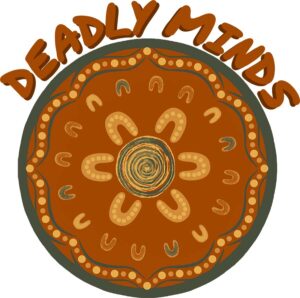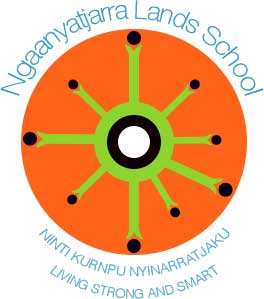Menu
We’re taking a breath – Any inquiries can be sent to admin@yogazeit.com.au
Written by Fiona Smith. Fiona volunteers for Yogazeit Ltd, helping the Not for Profit organisation to advance access to programs and classes for those in need. Here she shares her story with us…..
You know what it’s like to feel pain, right? Of course you do. Humans wouldn’t exist without their protective pain response. Yet pain science is a relatively new field in terms of western medicine.
When we talk about pain management, most people immediately think of taking a pain killer.
I grew up in the 1980’s. I remember the ads on TV that always said, “Try ‘our brand of pain medicine’ and if pain persists, please see your doctor.
Knowledge of the management of persistent pain was just accepted as mysterious to the everyday lay person who didn’t suffer with persistent pain, which seems absolutely ludicrous to me now after all I’ve experienced.
Management of pain requires a multifaceted approach, which is why it is recommended to seek medical advice.
The ads weren’t wrong, but one of the pitfalls of the “if pain persists, please see your doctor” approach has been that those who do have persistent pain are often misunderstood, because the general population in western culture have little to no knowledge of how to treat something they can’t see or feel for themselves. Unless a person experiences chronic pain first hand, they may not believe the person who does, and as they say, “seeing is believing,” and pain is an invisible illness.
Pain can be socially isolating for that reason.
But it doesn’t have to be.

My pain persisted when I was around 35 years of age, though I’d had manageable aches and pains ever since my teenage years. I thought that pain was just something that told you you’re still alive, but my pain became intolerable and my usual methods of management insufficient and I became increasingly ill.
I persisted in looking for answers, because although pain can be tenacious, pain never met me and I’ve never been one to back down from a challenge!
I met some wonderful people along the way and through trial and error, greatly improved.
My brilliant and empathetic GP diagnosed me with Fibromyalgia. Fibromyalgia has many symptoms and they vary person to person. Mine is characterised by mostly chronic widespread muscle pain, muscle cramping, myofascial pain syndrome, neuropathic pain, fatigue and the associated mental health challenges that come with your nervous system being severely taxed by unrelenting pain. Believe it or not, that’s the short-list! I am fortunate to have no permanent structural injury.
My wonderful GP recommended me to a very clever Rheumatologist, who then recommended me to a Pilates and Yoga based Physiotherapist when the pharmaceutical intervention failed to control my pain. My physiotherapist is very knowledgeable, and we’ve had many discussions about the limitations of the current medical system for the treatment of fibromyalgia, injury and other physical ailments and how yoga really is the best form of therapy.1, 2 I trust him implicitly because his research is evidence based and from personal experience I know it works better than any other intervention I’ve tried.
That same GP recommended me to a very perceptive Specialist Pain Medicine Physician and Anaesthetist, who recommend me to a kind and gentle Pain Psychologist.3
I joined a support group called The Fibromyalgia Support Network of Western Australia, and at an annual event a guest speaker, a knowledgeable Pain Specialist4, spoke about a non-pharmaceutical pain modulator in pill form that has been essential to my improvement, combined with other gentle and well tolerated prescribed medications, vitamins and mineral supplements. I also found a wonderful network of understanding and compassionate friends who have supported me through my journey whom I would not know what to do without.
I met the dedicated Pain Management Team at Fiona Stanley Hospital who ran short courses in pain understanding and management principles which added to my knowledge on how to improve my physical and mental well-being. From there they referred me on to community based exercise programs which gave me even more tools for recovery.
Without all of these numerous and essential people, plus my own doggedly determined nature, and the gift of time and the generous support of my family, I could not have possibly had any decent kind of quality of life because as anyone who’s suffered pain knows, it’s a miserable business.
But this is a story of recovery,
not one of the suffering of chronic pain.
As you can imagine, these people all taught me a lot along the way, and the principles that they showed me to help me manage my day to day pain and fatigue, I’m going to share with you now, and the best thing about them is that they don’t cost a cent!

What is pacing?
No, it’s not walking back and forth in an agitated manner.
Pacing for pain management is essentially a way to manage your activities in a day in a way that won’t aggravate your pain levels and cause a “pain flare” that will take the metaphorical wind out of your sails.
With chronic pain the nervous system works at a heightened state of sensitivity. Pacing helps calm and soothe.
Slow down, listen to your body, and take your time. Learn how to stop what you’re doing before you’re in severe pain, not when the pain forces you to stop.
Often there is a delayed onset of pain after activity, called “post-exertional malaise”5, and you won’t know you’ve overdone it until pain disturbs your sleep that night, or the pain and fatigue hits you sometimes days after the triggering event. It’s important to be aware, and maybe even keep a journal to track your activity and symptoms.
The wonderful folks at the University of Western Australia and the Department of Health can describe the principles of pacing better than I can:6
The main takeaway I took from the pacing principles was how to calculate how much activity I should be doing, which was so important, because when I was in such pain, my mind and body weren’t communicating in a friendly manner. I needed a bit of maths to help me limit myself because I was overdoing it to an extreme amount and then my body would let me know in no uncertain terms I’d done the wrong thing.
I set a baseline for daily steps that didn’t result in a pain flare, using the pedometer in-built into my smart-phone, then reduced the amount to 80% of that baseline. Once I was limited to 80% for a short time, practising that amount daily, I could begin to slowly increase the daily steps by roughly 10% each week, though recovery was not a straight line. Some weeks were harder than others. It’s best to do less than more on those hard weeks and be kind and gentle to yourself.
It can be frustrating and slow, but persistence pays off. At my worst, my daily step goal was enough to go from the bed to the bathroom, to the kitchen and back to bed. Six years later and I’ve just walked 8km on the weekend whilst chatting with a good friend and only my fatigue complained for two days following, and my pain not at all.

When you set goals for what you want to do when you suffer from lasting pain, they should be SMART:
Sustainable, Meaningful, Achievable, Realistic, and Timed.5
My pain psychologist talked to me about prioritising enjoyable activities for good quality of life that I could actually physically achieve. She had me write a list of twenty things I had loved to do before I suffered with pain, which for me ranged from things as simple as enjoying a cup of coffee or singing along to music all the way up to indoor rock climbing and kayaking. She then had me pick five from the list I could actually do each day, so the heavy exercise went by the wayside at the start but the coffee stayed for sure!
We then talked about performing daily tasks in short bursts to manage my pain and fatigue. She referred to this as “chunking” activities. For example, if you find walking a difficult activity, instead of taking a long walk, take several short ones spaced out throughout the day. It may be harder initially to self-motivate for multiple sessions of activity, as one friend said to me, “Once I sit down, it’s hard to get back up.” I can guarantee, though, that once you start to feel better and stronger, you will want to feel better and stronger and that’s good motivation.
I recommend mixing up activities if you find stopping and starting difficult. You don’t always have to stop what you’re doing entirely if you use different muscle groups. Try changing your position and see if a new and different way of doing things helps. It’s also fine to leave a task half-done and come back to it after doing another.
Just as you wouldn’t eat three meals in one sitting, so shouldn’t you try to do everything all at once if your body doesn’t appreciate it.
Break it up and scatter it throughout the day! You’ll get just as much done.
Rest is as important as activity. In a busy world with lots of demands we often forget this, but I can tell you from experience, that you’re better to take a scheduled pit stop than drop out of the race entirely.
For some people, rest means an afternoon nap or a sit down with a good cuppa. Some people find that a social activity with like-minded people is rejuvenating. Others prefer a good book. Meditation and mindfulness activities work for me, and I find being in nature restorative7, yet others I know would prefer a video game or a sudoku puzzle. However you slow down, it’s important that you take the time to do so, so that you can recharge and recuperate and then carry on with greater functional capacity.
For those who claim they don’t have time in their busy days, it’s simply a matter of redefining priorities and putting self care at the top of your list. Your body will thank you for it.
As Dr. Sukhraj Dhillon says, “You should sit in meditation for twenty minutes everyday – unless you’re too busy; then you should sit for an hour.”8

When it comes to chronic pain, there is a natural instinct to protect the body from harm by limiting movement. The technical term is kinesiophobia. I suffer from this, and because my pain was widespread, I limited all my movement for an extended period of time, and it was the worst possible course of action, as I only became weaker and more prone to injury, and it didn’t alleviate my pain long-term.
My Pilates and Yoga based Physiotherapist literally had to rebuild me from the ground up.
I remember those early days and the gentle guidance he gave me, and it’s really important to apply to your movement practice.
The old phrase, “No pain, no gain,” is 100% wrong if you’re already in pain!
What you want to do is take a stretch to a position where it feels mildly uncomfortable, NOT painful, and then ease it back to the point where it no longer feels uncomfortable for you. The goal is to then breathe into the stretch, deep breaths in and out, and on the out breath, extend a fraction further.
Over time, flexibility will increase, as will strength and stamina. Regular yoga practice is the key. For me, weekly is a must, every few days is better, and daily is the goal that I’m still working towards, but slow and steady wins the race!
Fibromyalgia responds very well to varied, whole body movement. Any activity that is gentle and not repetitive is likely to be good, and the beauty of yoga is in the variety of poses there are and accommodations that can be made depending on a person’s level of fitness or physical limitations.9
Having a helpful instructor who understands your limitations is a big key in getting started with movement for health. The instructors at Yogazeit are trained in Yoga for Seniors, and use chair based, gentle yoga practices, or aqua yoga, which can help support the body and ease the burden on joints and muscles. We also offer restorative mat yoga, for those with fewer mobility issues, who like more of a challenge, and laughter yoga which has benefits for mental well-being and happiness.
Yoga classes have the added benefit of being social. They are a fun experience and keep you engaged in your local community, which is vital for mental health.10
Yogazeit are happy to offer single yoga sessions, but continuous bookings of 10 sessions or more for maximum health benefits also come with the benefit of a discount. Find out more here
I hope you’ve found my story interesting, and that some of the hints and tips are helpful to you whether you have pain or not. Remember, set goals for happiness, don’t try to do more than your body is tolerant of, take it slow and steady, regularly change up your activities, take regular rest breaks but keep on moving!
Love the body you’re in. It’s the only one you’ll ever have!
Take care, everyone,
Fiona
References and Useful Links
1.https://www.innerfocusphysio.com.au/blog/consensus-exercise-first-for-fibromyalgia
2. https://www.innerfocusphysio.com.au/articles
3. https://www.painless.health/
5. https://www.ncbi.nlm.nih.gov/pmc/articles/PMC5464757/
6. https://painhealth.csse.uwa.edu.au/pain-module/pacing-and-goal-setting/
8. https://www.amazon.com/Dr.-Sukhraj-S.-Dhillon/e/B004584DL0%3Fref=dbs_a_mng_rwt_scns_share
9. https://diannebondyyoga.com/yoga-for-everyone-book
10. https://www.actbelongcommit.org.au/
11. https://bmcgeriatr.biomedcentral.com/articles/10.1186/s12877-017-0520-6











No spam – just event updates, breathing exercises and free meditation/mindfulness activities.
We won’t pass your details onto third parties. Promise!
© Yogazeit 2019–2023. All rights reserved.
View our Terms and Conditions and Policies and our Guiding Principles.
ABN: 62 631 658 305
Website designed by Eurisko with thanks and gratitude to Lotterywest Grants.
Yogazeit is taking a breathing space.
Any inquiries can be sent to admin@yogazeit.com.au.
We wish to acknowledge the traditional custodians of the land we are working and living on, the Whadjuk Noongar people.
We acknowledge and respect their continuing culture and the contribution they make to the life, education and mindfulness of this city and this region supported by the leadership of Noongar elders past, present and emerging.
We extend this acknowledgement and respect to all Aboriginal and Torres Strait Islander peoples across Australia.